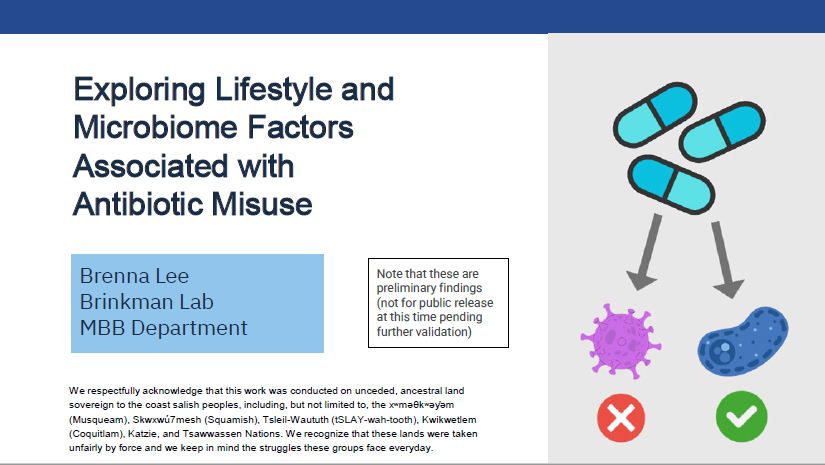Exploring Lifestyle and Microbiome Factors Associated with Antibiotic Misuse
Main Article Content
Abstract
Antibiotics save lives, but their effectiveness is decreasing as bacteria are growing more resistant to such treatments. Antibiotic resistance prevalence has been accelerating, in part by inappropriate use of antibacterial drugs, yet there is limited research on the reasons why people actually use antibiotics. This descriptive study looks at 2111 infants from the CHILD Cohort Study, a longitudinal project collecting diverse data on children and their parents from pregnancy through childhood. Parents reported reasons why their child took antibiotics, with some example responses being “suspected infection” and “viral infection”. These free-text reasons were standardized under ontologies, which are defined terms arranged by hierarchical relationships, to reduce ambiguity and inconsistencies for downstream analyses. Standardized reasons can then be placed into categories such as “incorrect”, “correct”, and “unsure” reasons for antibiotic use, and subcategories like “for viral infections”. Following standardization, a logistic regression-based analysis can be conducted to identify associations between 1892 variables (including lifestyle factors) and antibiotic misuse. Gut microbiome data is also available from CHILD infant stool samples collected at ages three months and one year. From these data, differences in diversity and abundance of gut bacterial species can be compared among and between different categories of reasons for antibiotic use. This study will explore how often antibiotics are misused in Canada and by who, along with the impact of antibiotic misuse on the gut microbiome. This can aid development of further hypotheses regarding why antibiotics are used inappropriately and what consequences this has on human health.
Article Details

This work is licensed under a Creative Commons Attribution-NonCommercial-NoDerivatives 4.0 International License.
References
Anthony, W. E., Burnham, C.-A. D., Dantas, G., & Kwon, J. H. (2021). The Gut Microbiome as
a Reservoir for Antimicrobial Resistance. The Journal of Infectious
Diseases, 223(Supplement_3), S209–S213. https://doi.org/10.1093/infdis/jiaa497
Antimicrobial Resistance Taskforce (AMRTF). (2022). Canadian Antimicrobial Resistance
Surveillance System (CARSS) Report 2022. Public Health Agency of Canada (PHAC).
https://doi.org/10.58333/e241022
Murray, C. J. L., Ikuta, K. S., Sharara, F., Swetschinski, L., Robles Aguilar, G., Gray, A., Han, C.,
Bisignano, C., Rao, P., Wool, E., Johnson, S. C., Browne, A. J., Chipeta, M. G., Fell, F.,
Hackett, S., Haines-Woodhouse, G., Kashef Hamadani, B. H., Kumaran, E. A. P.,
McManigal, B., … Naghavi, M. (2022). Global burden of bacterial antimicrobial
resistance in 2019: A systematic analysis. The Lancet, 399(10325), 629–
https://doi.org/10.1016/S0140-6736(21)02724-0
Subbarao, P.; Anand, S.S.; Becker, A.B.; Befus, A.D.; Brauer, M.; Brook, J.R.; A Denburg, J.; HayGlass, K.T.; Kobor, M.;
Kollmann, T.; et al. The Canadian Healthy Infant Longitudinal Development (CHILD) Study: Examining developmental origins
of allergy and asthma. Thorax 2015, 70, 998–1000

